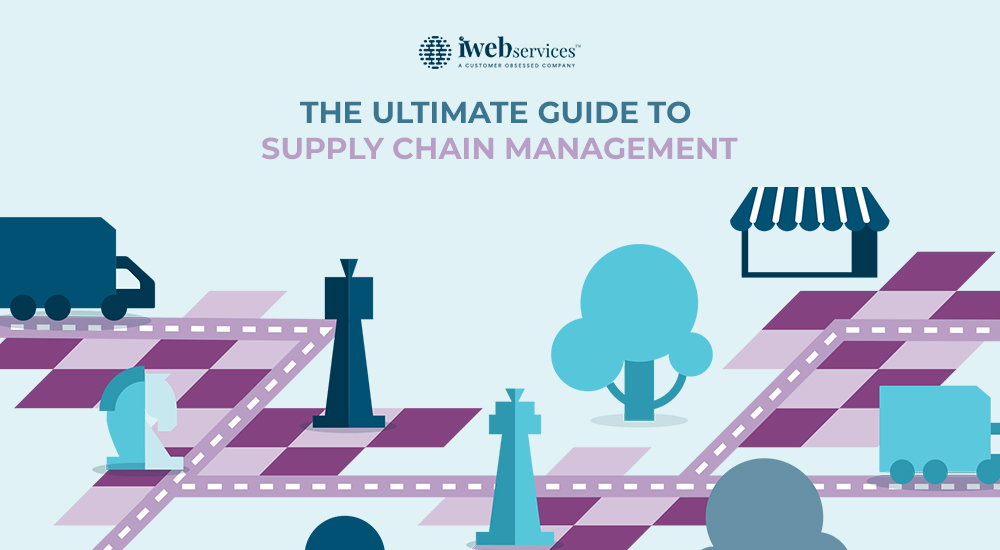Introduction
Globalization is a phenomenon that none of us can avoid in our daily lives. Over the last few decades, globalization has become a huge and significant part of the commercial sector.
Supply chains working in these sectors have to ensure high efficiency and cost-effectiveness as they pass through lots of points and companies to get the goods they are trying to source. Managing a complicated supply chain is something that is a full-time job for an entire team.
However, in the 21st century, supply chain management companies use sophisticated optimization software to do all their work. This concept is hard to grasp for people who are new to this sector. Hence, in this blog, we will cover all the aspects of supply chain management and make sure that you know every part of it in and out.
What is supply chain management?
Supply chain management is a cohesive network of people, companies, activities, and resources responsible for controlling the flow of products from one point to another within an organizational framework.
Supply chain management development can help people source goods from one point to another on the entire chain while keeping track of the location and status of the products in real-time.
What are some of the levels of supply chain management?
There are several levels on which supply chain management works. By understanding and facilitating these levels, we can figure out how to build an effective and efficient supply chain management solution that can boost revenue for the company and bring about significant changes in the procedures used to source goods for the company.
Strategic planning level
The top management usually heads this part of the planning to figure out the critical points of the entire supply chain. These deal with changes and features that deal with the whole framework rather than specific points or individual departments. These also often incur long-term planning sessions before they are implemented in the supply chain or on the ground at an operational level.
Strategic planning of this kind in the supply chain management system is crucial to keep the chain running smoothly in the long run. This level of supply chain management comes with the following features:
- Management of inventory and products throughout the supply chain
- The seamless integration of widespread technological advancements regularly make the supply chain more compatible and effective
- Creation of a network of merchants, transporters, and vendors so that the entire supply chain process gets simplified every single time something has to be sourced
Tactical management level
Tactical management planning is done at a level where the processes and strategies are defined. These decisions play a very active role in minimizing the risks of the supply chain becoming inefficient. They are also used to control costs on a long-term basis so that every level of the organization is benefitted in some way or other.
Examples of tactical management of the supply chain include the establishment of guidelines and the meeting of regulatory standards. This level of supply chain management comes with the following features:
- Procurement of necessary materials and services for the transportation of goods and products and services from one point in the organizational framework to another
- Designing transport and warehousing solutions that bring more productivity to the workers who have been employed at these points
- Creation of production schedules and guidelines to satisfactorily meet the requirements set by governments and other agencies concerning the safety and security of products and people
Operational level
The decisions in the supply chain that have a lot to do with the realities and the work on the ground are dealt with at this level of management. This planning comes into the picture when the strategic and tactical planning have already been implemented.
The decisions made at the operational level of planning at the supply chain management system reflect in the day-to-day operations of a business unit or an individual department. For the sake of brevity, the operational management of the supply chain carries out activities that affect the working of the organization tangibly. This level of supply chain management comes with the following features:
- Keeping track of the daily and weekly demand for products, goods, and services to make sure that the supply chain is truly efficient in transporting goods at the right time
- Monitoring every point in the supply chain to make sure that the activity of order fulfillment is done well
- Managing inventory beforehand to make sure that inventory is always stocked as per the behaviors of the consumer<
- Settlement of damages and losses between the different stakeholders in the supply chain: suppliers, vendors, and the clients
Five primary processes of supply chain management:
These processes aid the decisions made at a different level of chain management.
- Flow of product
- Flow of information
- Flow of finances
- Flow of value
- Flow of risk
Proper integration of these flows ensures better collaboration and coordination along the entire supply chain.
Core elements of SCM:
Demand management: It helps companies in planning and managing inventory, monitoring activity, identifying trends, and predicting future demand.
Communication and collaboration: They are essential to strengthen relationships internally and externally with vendors and suppliers.
Business process integration: It enables companies to integrate different departments and functions smoothly. It further consists of:
- Relationship Management with Customers and Suppliers
- Product Development
- Procurement
- Manufacturing Flow Management
- Inventory Management
- Order Management
- Distribution and Logistics
Various supply chain management solutions aim to integrate these processes; however, usually, this process is done first for the operations with maximum return potential.
Types of technologies used in supply chain management
Asset tracking: It serves as the foundation of robust tracking and monitoring in supply chain management. It includes customizable asset tags and tracking labels.
Supply chain management software: It aims to integrate all or several processes involved in SCM.
Cloud computing: It enables accurate tracking of products through its entire cycle and provides other benefits such as advanced analysis, low cost, multi-platform integration, etc.
Mobility: It enables:
- Real-time logistic management
- Better communication within the transportation network
- More accurate productivity and efficiency metrics
Conclusion
Supply chain management is a highly complex process. Thus, to utilize the right technologies to streamline processes, it is essential to thoroughly understand SCM’s levels, elements, and processes.
 June 21, 2021
June 21, 2021







